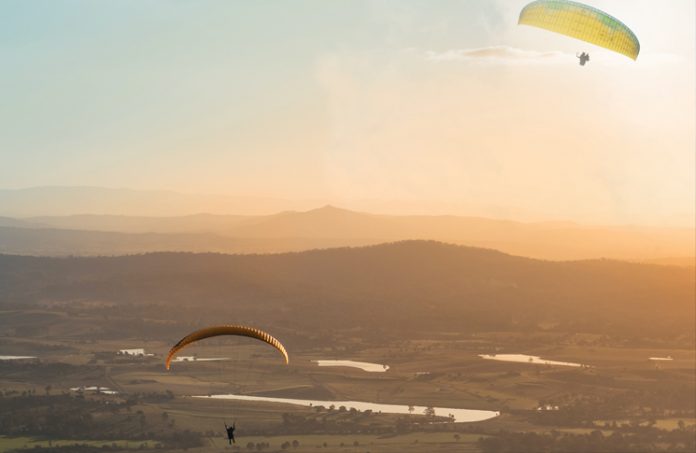This pilot had the terrifying experience of another paraglider heading directly at them
Anonymous
It took me a little longer than I had anticipated to get signed off on my PG2 paragliding licence. I work in education, so I had the September school holidays to smash out a nine-day intensive course. I blame the fires among other things for the time to get the licence, but I was ecstatic to be flying, to say the least.
A nearby mountain looked like it was on for a perfect afternoon’s soaring for my maiden PG2 flight, smooth and uncrowded, just right for a newly signed off student. I had my safety officer lined up on launch and my new gear gleaming in the afternoon sun, obviously fresh off the block.
Someone asked if I had put a reserve chute in my new harness and I had, the night before, in prep for this momentous occasion. My red ribbon was attached to my harness, for all who were flying with me to know I was on my red Ps.
My launch was awesome—I made a right turn and soared the ridge without instruction, just encouraging words occasionally radioed from my safety officer. What a feeling of freedom—the air was warm and silky smooth with just enough lift to keep me above the ridge. I was very aware of the other pilots sharing the ridge with me and managed to keep behind them, to give myself space.
With my right-wing tip to the ridge and tracking south, a glider also tracking south not far ahead of me did a 180-degree turn—right in front of me—and began to head straight at me. They were just above me and certainly with not enough clearance.
The distance between us was rapidly diminishing but neither of us had changed course—there was not enough time and hardly any room. For all intents and purposes, it was my right of way. I was doing everything that I had been taught, but as a brand new PG2 pilot—and on my first flight to boot—I was akin to a deer, startled in the headlights.
I yelled at the pilot hoping that would change the inevitable outcome. They managed to change course slightly and turn away from the ridge but not enough to avoid contact.
I watched—seemingly in slow motion—as their legs and pod harness slid under my wing, causing the canopy to completely collapse and me to fall out of the sky. I didn’t think I was really high enough for my reserve to make any impact but was about to reach for it anyway, when the canopy opened up again, halting my rapid descent.
Panicked, I radioed my safety officer to say I was going to head to the landing zone. I left the ridge and landed safely in a field of cows—in disbelief. While I waited for my retrieve, I had a little cry. Luckily, another pilot landed behind me, just in time to give me a well-needed hug and words of comfort.
It was getting dark when we finally got back to the launch site. We had called the other pilot and asked if they could meet us to debrief, which they did. Not much was said—the other pilot was seemingly unperturbed, but I was still in shock. However, a day or so later, I received a text message of apology. I think it took a few days for the ‘what if’ to sink in.
Lessons learnt: As I build up my confidence again, I am hyper-vigilant of anyone flying close to me and still nervous when there are lots of pilots in the sky. The ‘take away’ from this is to be aware of everyone you are sharing the sky with and track them at all times. It is especially important to take note of new pilots (red ribbon) and give them extra space and a little more consideration, just as you would on the road around P platers.
Spend time on launch observing who is already flying. The ability to predict their intentions comes as you grow as a pilot, but it is something that should definitely be fostered. Some people you will earmark as skilled pilots and others you will learn to give a wide berth.



‘Seemingly unperturbed’? Good lord!
I wonder what the other pilot’s response would have been had the positions been reversed? Congratulations on a lucky escape from a potential disaster through no fault of your own!
I witnessed a very similar situation while supervising a relatively new PG2, that one resulted in reserve throws for both pilots. They were lucky to escape with a few scratches and a late tree rescue for one of them. Like all effective decision making, be aware, decide and act early. Don’t wait until it’s too late.